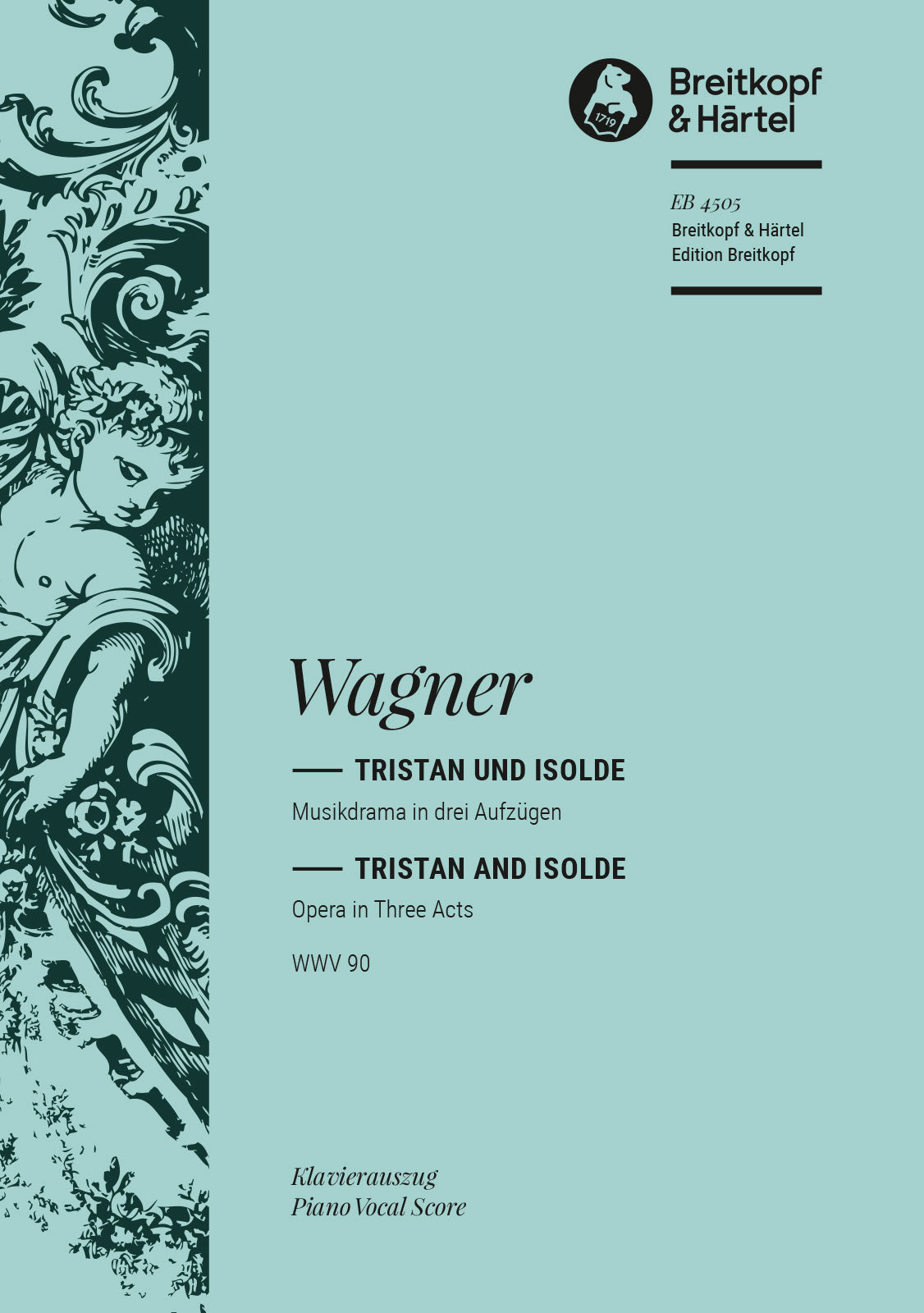Wagner: Tristan and Isolde, WWV 90
In stock and typically ships within 1 business day.
- Composer: Richard Wagner (1813-1883)
- Format: Vocal Score
- Instrumentation (this edition): Piano Reduction, Voice
- Originally for: Opera
- Work: Tristan and Isolde, WWV 90
- Work Language: German
- ISMN:
- Size: 7.5 x 10.6 inches
- Pages: 352
Description
Richard Wagner wrote Tristan and Isolde in the years 1857 to 1859. The first edition was published by Breitkopf & Härtel in Leipzig in 1860. The world premiere took place in the Königliches Hof- and National-Theater in Munich on 10 June 1865 under the direction of Hans von Bülow.
In 1856 pressing financial obligations forced Wagner to interrupt the composition of the "Ring" to work on "Tristan and Isolde". He initially planned a work that was modest in its production and performance demands. The project was also given priority not least because of the prospect of the royalties which he would then receive. He once again turned to Breitkopf & Härtel for the performance material: "‘Tristan and Isolde' is scheduled to be given its first performance at the end of this year. I still hope that it will take place in Karlsruhe under my guidance. Due to the celebrity that I have now acquired, I assume that a new and easily performable work of mine should be able to spread very quickly across the German stages in its first winter season." Wagner was wrong. although the publisher had spent a great deal of time and money in producing preliminary material, Wagner wrote to Breitkopf & Härtel from Munich in November 1864: "The squalor of Germany's opera singers and the vile condition of its opera houses have so far dissuaded me from allowing a performance of ‘Tristan and Isolde'. What I needed was an impassioned young monarch to restore my courage. Next spring you will hear about the work's premiere in Munich, and you will then hopefully become more confident about this publication."
Publishers use a lot of words to describe what they sell, and we know it can be confusing. We've tried to be as clear as possible to make sure you get exactly what you are looking for. Below are descriptions of the terms that we use to describe the various formats that music often comes in.
Choral Score
A score for vocalists that only contains the vocal lines. The instrumental parts are not there for reference. Generally, cheaper than a vocal score and requires multiple copies for purchase.
Facsimile
Reproductions of the original hand-written scores from the composer.
Full Score
For ensemble music, this indicates that the edition contains all parts on a single system (there are not separate parts for each player). In larger ensembles, this is for the conductor.
Hardcover
Hardbound. Generally either linen-covered or half-leather.
Orchestral Parts
Similar to a wind set, this is a collection of parts. In the case of strings, the numbers listed are the number of copies included, though generally these are available individually (often with minimum quantities required).
Paperback
When publishers offer multiple bindings (e.g. hardcover) or study scores, this is the "standard" version. If you're planning to play the music, this is probably what you want.
Performance / Playing Score
A score of the music containing all parts on one system, intended for players to share. There are not separate parts for each player.
Set of Parts
For ensemble music, this indicates that there are separate individual parts for each player.
Solo Part with Piano Reduction
For solo pieces with orchestra, this is a version that contains a piano reduction of the orchestra parts. For piano pieces, two copies are typically needed for performance.
Study Score
A small (think choral size) copy of the complete score meant for studying, and not playing. They make great add-ons when learning concertos and small chamber works.
Vocal Score
A score prepared for vocalists that includes the piano/organ part or a reduction of the instrumental parts.
Wind Set
For orchestral music, this is a collection of wind and percussion parts. The specific quantities of each instrument are notated.
With Audio
In addition to the printed music, the edition contains recordings of the pieces. This may be an included CD, or access to files on the internet.
With / Without Fingering (Markings)
Some publishers prepare two copies - a pure Urtext edition that includes no fingering (or bowing) suggestions and a lightly edited version that includes a minimal number of editorial markings.



